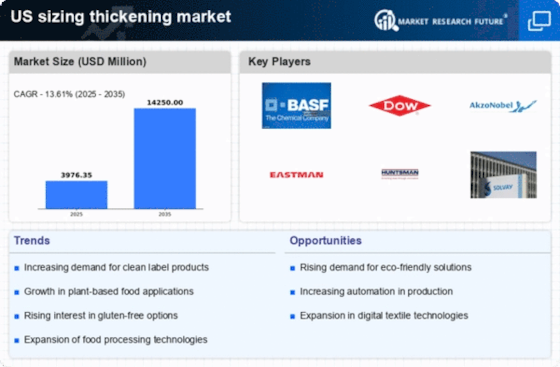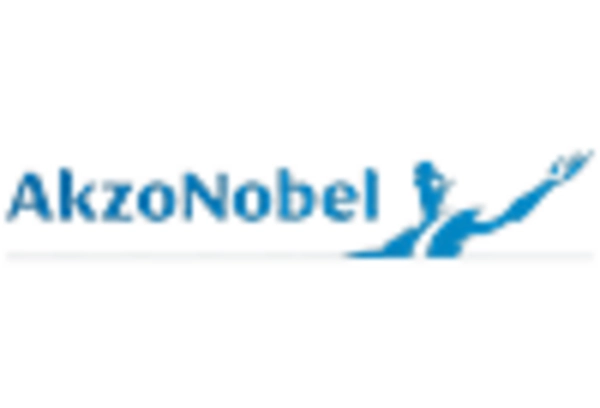Technological Advancements in Processing
The ongoing technological advancements in processing techniques are reshaping the sizing thickening market. Innovations such as improved filtration systems and automated mixing processes enhance efficiency and product quality. These advancements allow manufacturers to produce thicker and more consistent products, catering to the evolving demands of various industries. The market is projected to grow at a CAGR of approximately 5.2% from 2025 to 2030, driven by these technological improvements. As companies invest in modernizing their facilities, the overall productivity and profitability of the sizing thickening market are likely to increase, attracting new entrants and fostering competition.
Increased Awareness of Clean Label Products
The rising consumer awareness regarding clean label products is significantly impacting the sizing thickening market. As consumers become more health-conscious, they seek products with transparent ingredient lists and minimal additives. This trend is prompting manufacturers to reformulate their products, opting for natural thickeners and avoiding synthetic alternatives. In 2025, it is estimated that clean label products will account for over 30% of the market share in the sizing thickening market. This shift not only aligns with consumer preferences but also encourages innovation in sourcing and production methods, ultimately enhancing the market's growth potential.
Regulatory Compliance and Quality Standards
Regulatory compliance and adherence to quality standards are critical factors influencing the sizing thickening market. In the US, stringent regulations imposed by agencies such as the FDA ensure that thickeners used in food products meet safety and quality benchmarks. This regulatory landscape compels manufacturers to invest in high-quality raw materials and production processes, thereby elevating the overall standards within the sizing thickening market. As companies strive to comply with these regulations, they may incur additional costs, but this investment is likely to enhance consumer trust and brand loyalty, ultimately benefiting the market.
Rising Demand from Food and Beverage Sector
The food and beverage sector is a significant driver of the sizing thickening market. With the increasing consumer preference for processed foods, the demand for thickeners and stabilizers has surged. In 2025, the food and beverage industry accounts for nearly 40% of the total market share, indicating a robust reliance on thickening agents. This trend is expected to continue as manufacturers seek to enhance texture and mouthfeel in their products. The sizing thickening market is likely to benefit from this growing demand, as companies innovate to meet consumer expectations for quality and consistency.
Growth of the Personal Care and Cosmetics Industry
The personal care and cosmetics industry is emerging as a vital driver for the sizing thickening market. With an increasing focus on product aesthetics and performance, formulators are incorporating thickeners to achieve desired textures and viscosities. In 2025, the personal care sector is projected to contribute approximately 25% to the sizing thickening market. This growth is fueled by consumer demand for high-quality, effective products that deliver a luxurious feel. As brands innovate and expand their product lines, the sizing thickening market is likely to experience sustained growth, driven by the evolving needs of the cosmetics industry.

















Leave a Comment